- Joined
- Jul 27, 2009
- Messages
- 46
- Points
- 0
Hi!
So, I had wanted to build a working example of the double-slit experiment. Yes, I suppose that diffraction and the wave nature of light is easy enough to demonstrate, but it's always better when you use lasers, am I right?
But even beyond a simple double slit experiment, I found this article on making a quantum eraser. So I gave it a shot.
Here's what I ended up with. It's a high-powered red LCC, being driven by a simple LM317 circuit. I made a simple (and terrible) mount from sheet acrylic using solvent welding. For the obstruction holders, I used two helping hands (cheap ones) which I attached to the acrylic base.
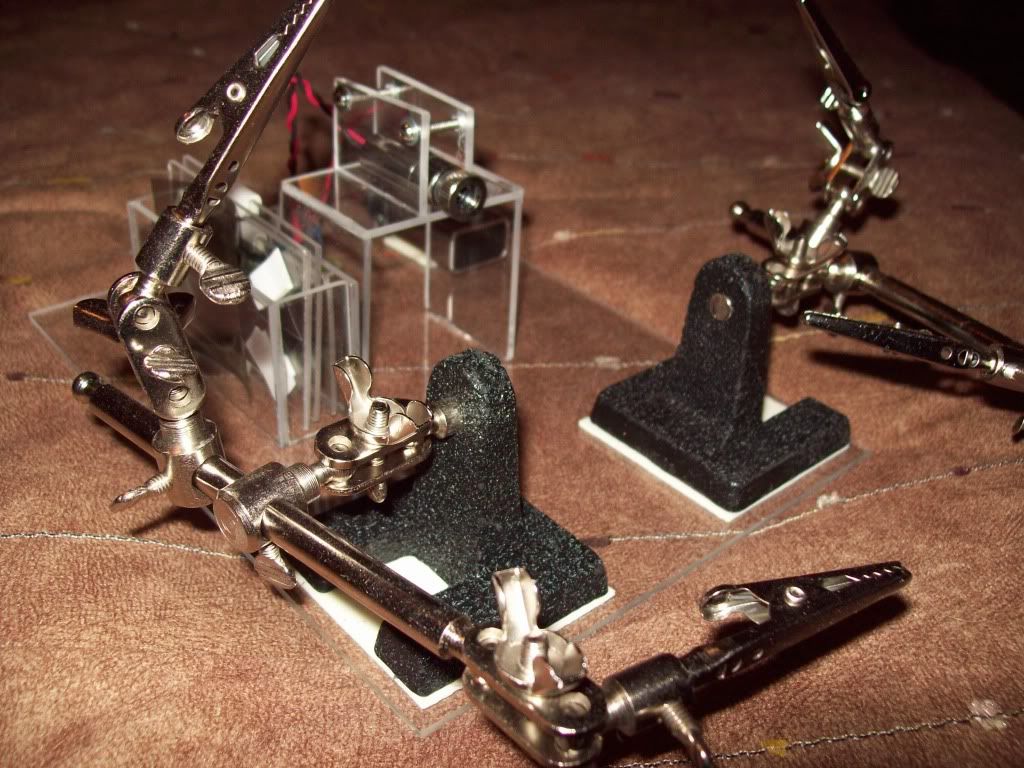
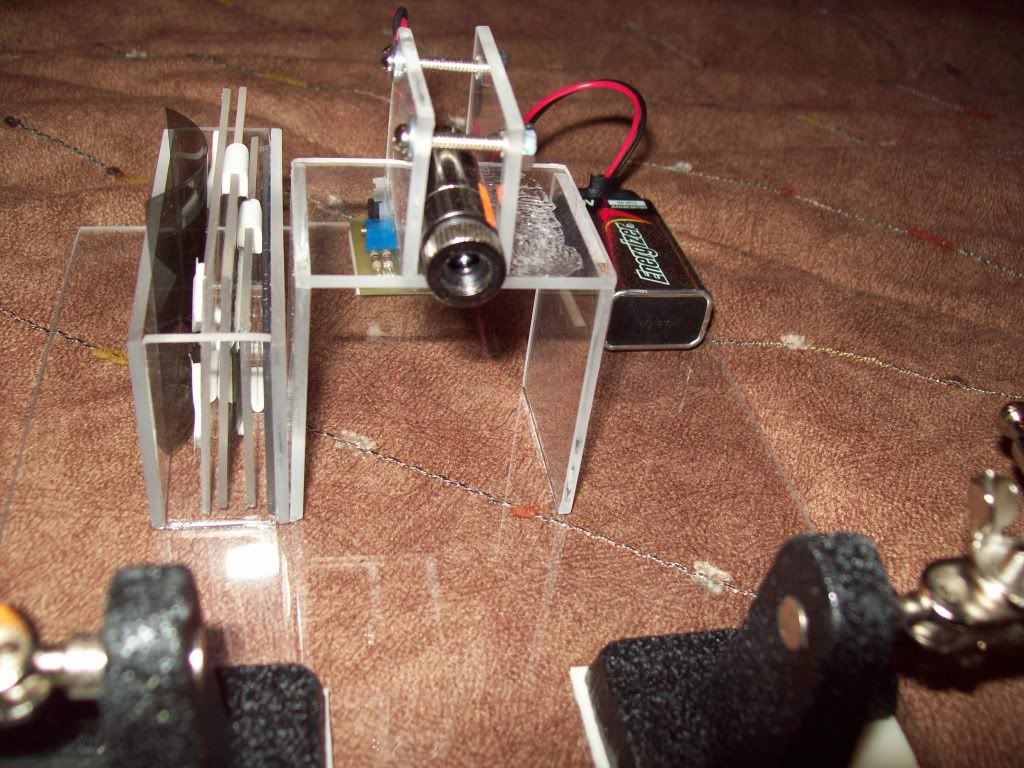
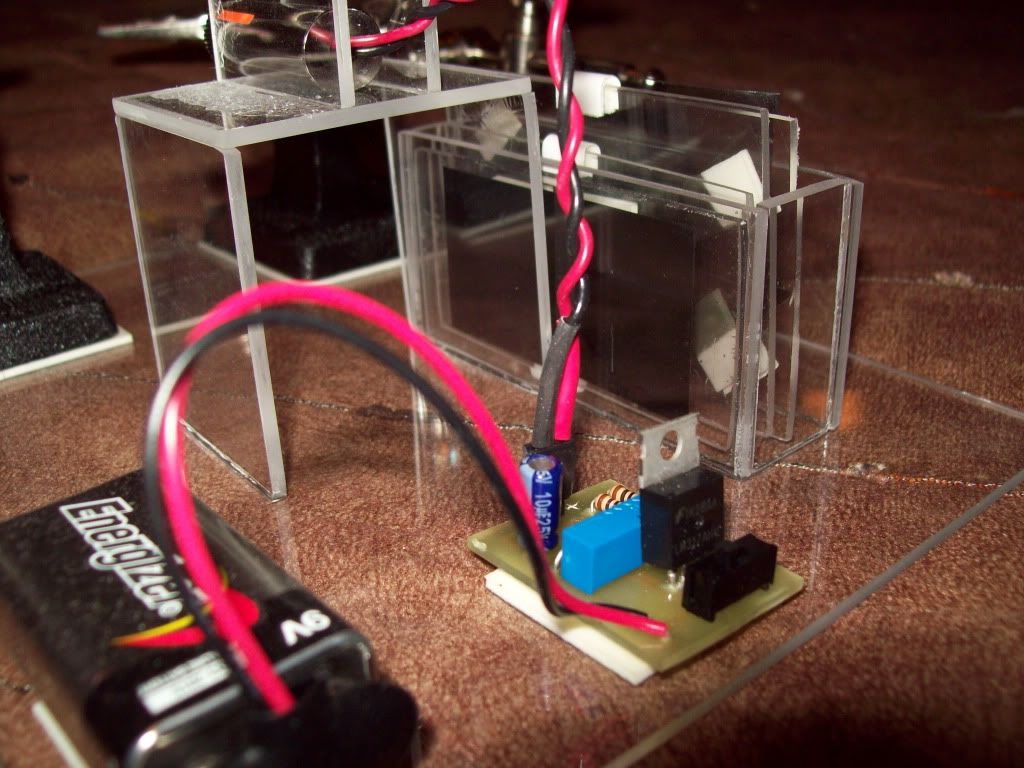
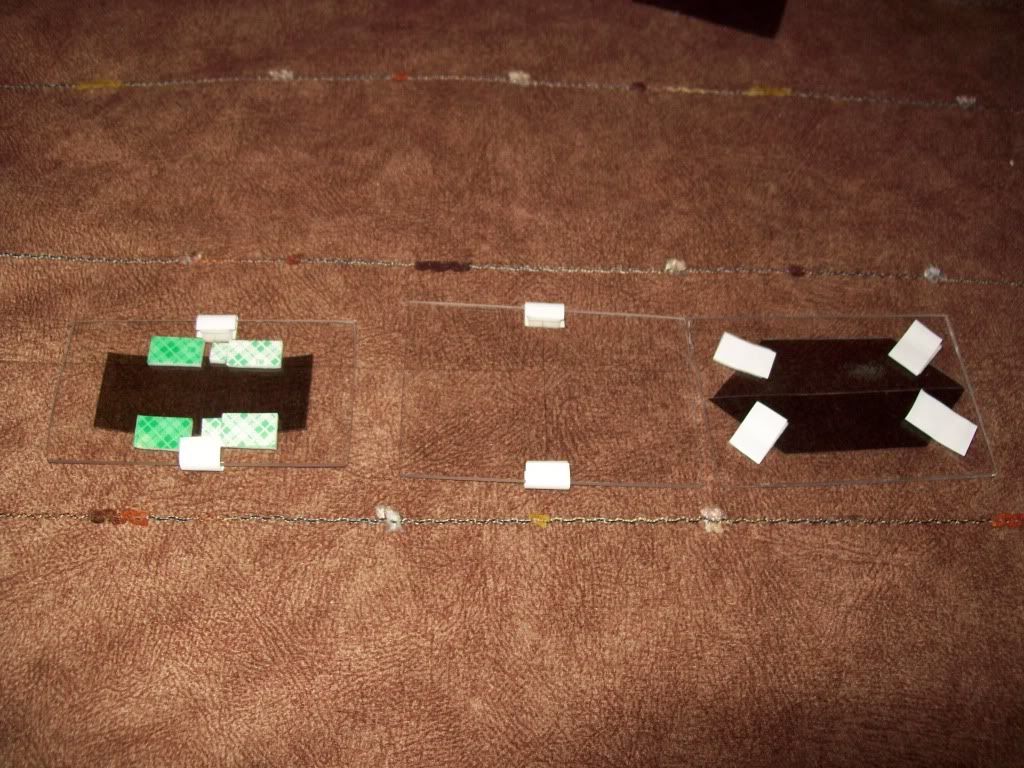
The leftmost piece is a thin wire that is attached in front of two linear polarized that are perpendicular to each other. This is the "labeler" in the quantum eraser setup. The middle is simply a wire, which is used to demonstrate the "double slit" portion of the experiment. The rightmost is two polarizers at right angles to each other, but without any wire.
Here is the interference pattern that appears with the wire by itself.
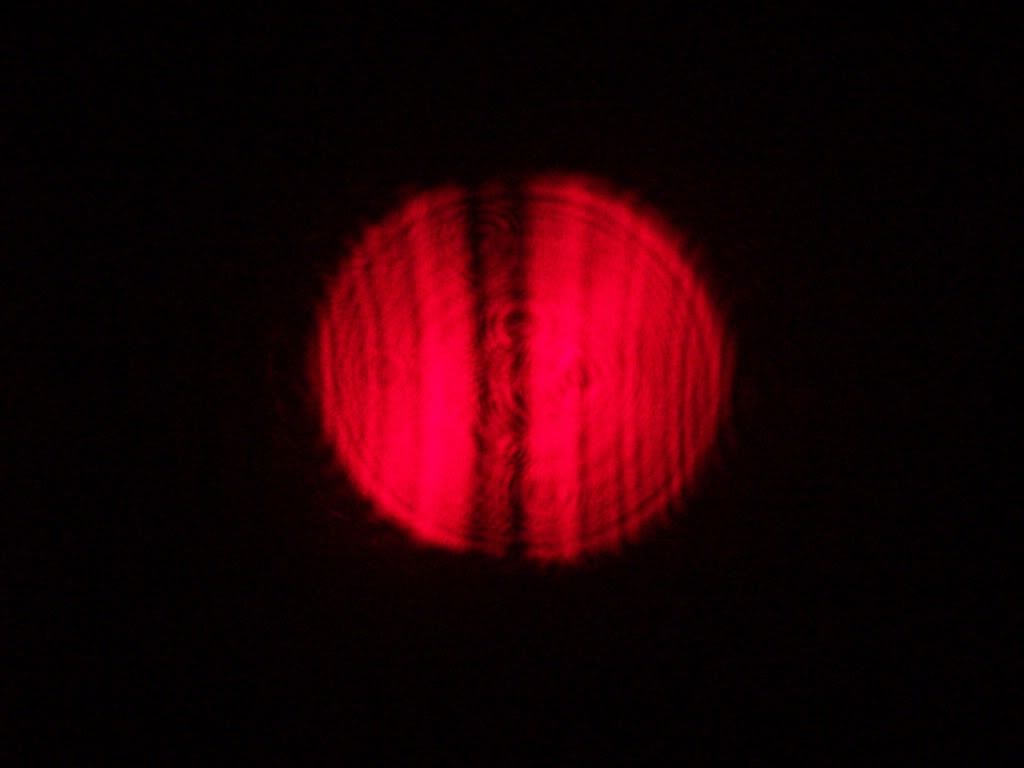
Notice the obvious fringes.
Here it is with the "labeler."
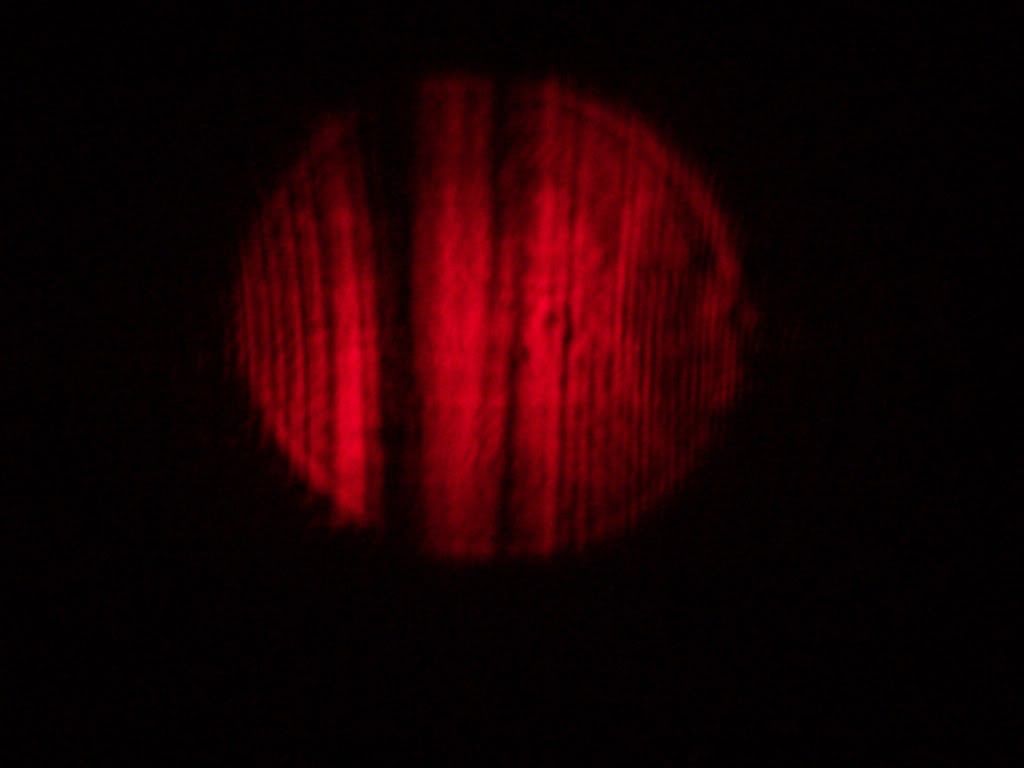
This did not work as dramatically as I had hoped for. It's somewhat difficult to align the wire and the edges of the two polarizers together at one point. This seems to be the best I can do with this particular set up. Notice that the central fringe is fairly solid-looking, even though it gives some hint of interference lines.
Here it is with the "eraser" inline after the "labeler."
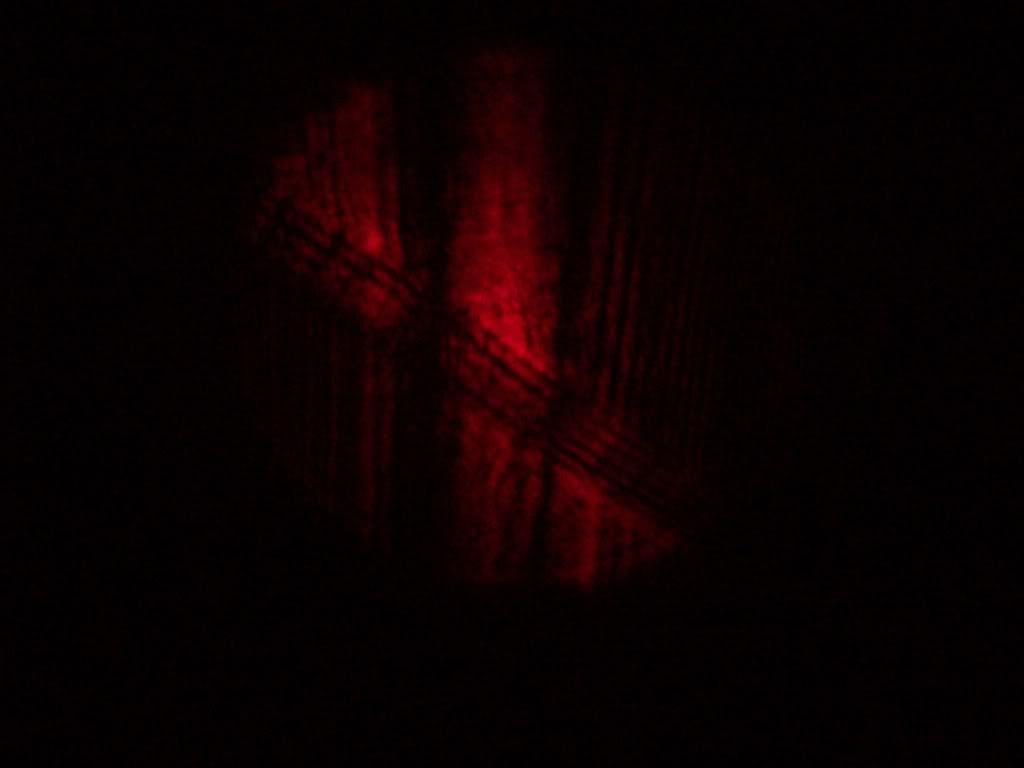
Pardon the terrible photos. The eraser is at a 45-degree angle, to show the difference with and without the eraser. Notice that the light in the central fringe appears solid-ish above the diagonal seam, but that the light below shows some relatively obvious interference.
I suppose my question is, am I analyzing this too optimistically? Is there a better way to perform this experiment? Is my "labeler" incorrectly made? Should I stop posting giant pictures?
That's about it.
Here's a picture of the beam with no obstruction, for reference.
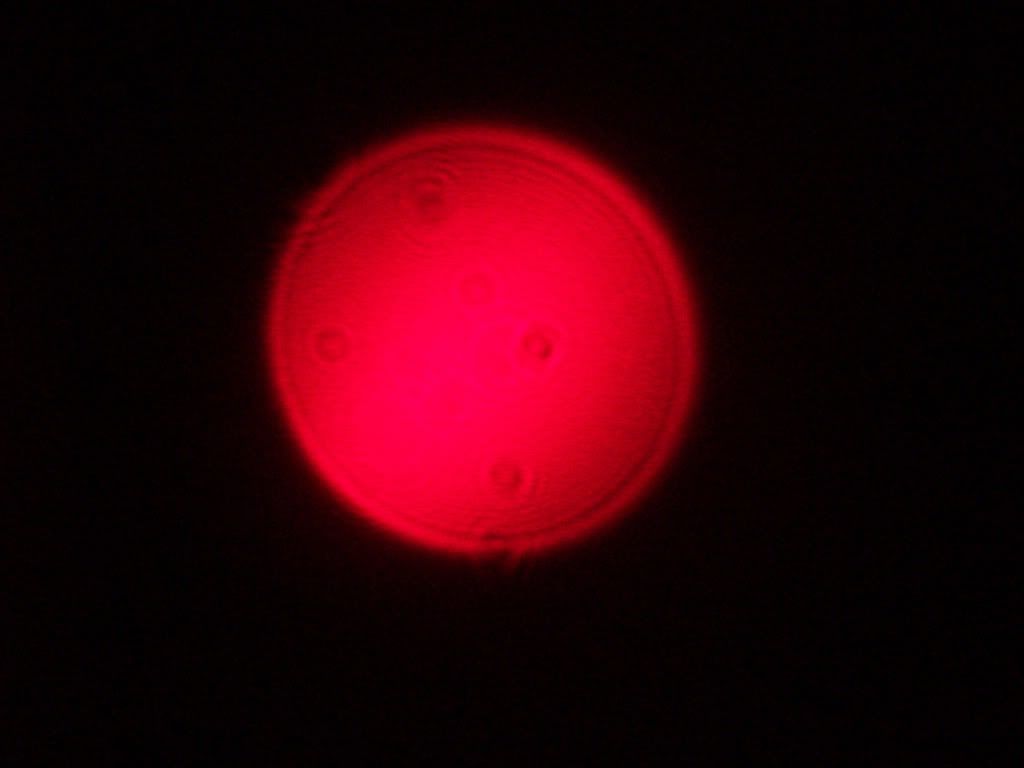
EDIT: Maybe I should have posted this under "Science & Lasers" instead?
So, I had wanted to build a working example of the double-slit experiment. Yes, I suppose that diffraction and the wave nature of light is easy enough to demonstrate, but it's always better when you use lasers, am I right?
But even beyond a simple double slit experiment, I found this article on making a quantum eraser. So I gave it a shot.
Here's what I ended up with. It's a high-powered red LCC, being driven by a simple LM317 circuit. I made a simple (and terrible) mount from sheet acrylic using solvent welding. For the obstruction holders, I used two helping hands (cheap ones) which I attached to the acrylic base.




The leftmost piece is a thin wire that is attached in front of two linear polarized that are perpendicular to each other. This is the "labeler" in the quantum eraser setup. The middle is simply a wire, which is used to demonstrate the "double slit" portion of the experiment. The rightmost is two polarizers at right angles to each other, but without any wire.
Here is the interference pattern that appears with the wire by itself.

Notice the obvious fringes.
Here it is with the "labeler."

This did not work as dramatically as I had hoped for. It's somewhat difficult to align the wire and the edges of the two polarizers together at one point. This seems to be the best I can do with this particular set up. Notice that the central fringe is fairly solid-looking, even though it gives some hint of interference lines.
Here it is with the "eraser" inline after the "labeler."

Pardon the terrible photos. The eraser is at a 45-degree angle, to show the difference with and without the eraser. Notice that the light in the central fringe appears solid-ish above the diagonal seam, but that the light below shows some relatively obvious interference.
I suppose my question is, am I analyzing this too optimistically? Is there a better way to perform this experiment? Is my "labeler" incorrectly made? Should I stop posting giant pictures?
That's about it.
Here's a picture of the beam with no obstruction, for reference.

EDIT: Maybe I should have posted this under "Science & Lasers" instead?
Last edited:


